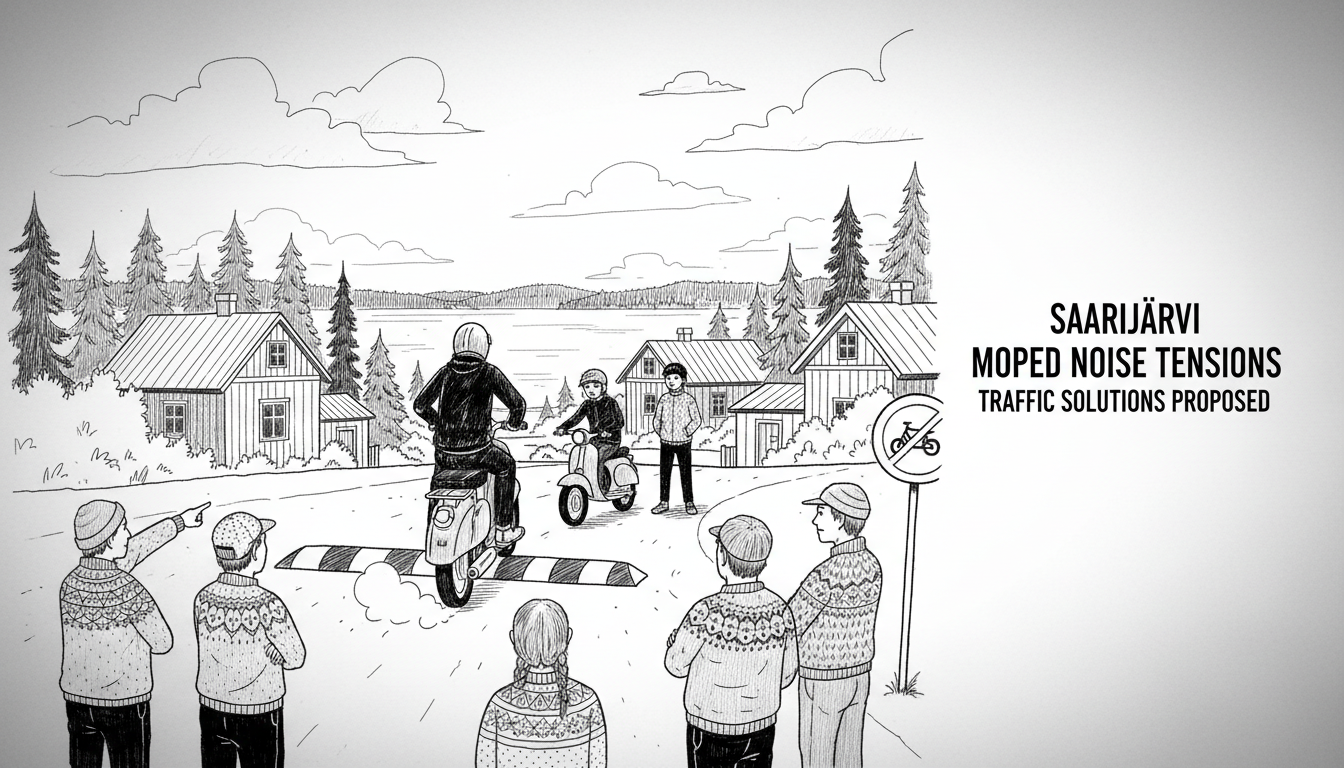A disruptive moped problem in central Saarijärvi has prompted city council members to propose concrete solutions. The issue involves loud nighttime riding that disturbs local residents. Councilor Petra Virtanen and seventeen other representatives submitted a formal initiative in June addressing the community concern.
The proposal includes installing speed bumps on specific streets and placing traffic signs prohibiting nighttime riding. It also suggests designating a dedicated moped area for young riders and organizing a community discussion between moped enthusiasts and downtown residents. These measures aim to balance youth recreation with neighborhood peace.
A municipal working group identified Sivulantie and Urheilutie as primary locations for speed bumps. These traffic calming devices would reduce vehicle speeds locally. However, officials acknowledge potential drawbacks. Speed bumps can create additional vehicle frame noise and lead to acceleration after passing, potentially increasing overall noise disturbance.
The city plans to install two or three temporary speed bumps during summer months. These will be attached directly to road surfaces. Municipal authorities will monitor their effectiveness in reducing driving speeds before considering permanent installation.
This situation reflects common summer challenges in Finnish towns where limited youth activities sometimes lead to conflicts between teenagers and other residents. Similar moped noise disputes have occurred in other Nordic municipalities during warm weather months when riding activity increases.
Local governance in Finland typically handles such neighborhood issues through council initiatives and working groups. The process demonstrates how Nordic communities address quality-of-life concerns through structured dialogue and measured interventions rather than immediate prohibitions.
The temporary approach shows practical Nordic problem-solving. Officials test solutions before committing to permanent changes. This cautious method balances immediate action with long-term consideration of all impacts.
International readers might find interest in how smaller Finnish towns manage youth recreation and neighborhood harmony. The situation highlights universal challenges of balancing different community needs within limited municipal resources.
What happens next depends on summer monitoring results. If speed bumps prove effective without creating new noise issues, the city might install permanent traffic calming measures. The proposed community discussion could also help build understanding between different groups.
This case demonstrates how Nordic municipalities typically approach such conflicts - through measured proposals, temporary testing, and community dialogue rather than immediate enforcement actions.

